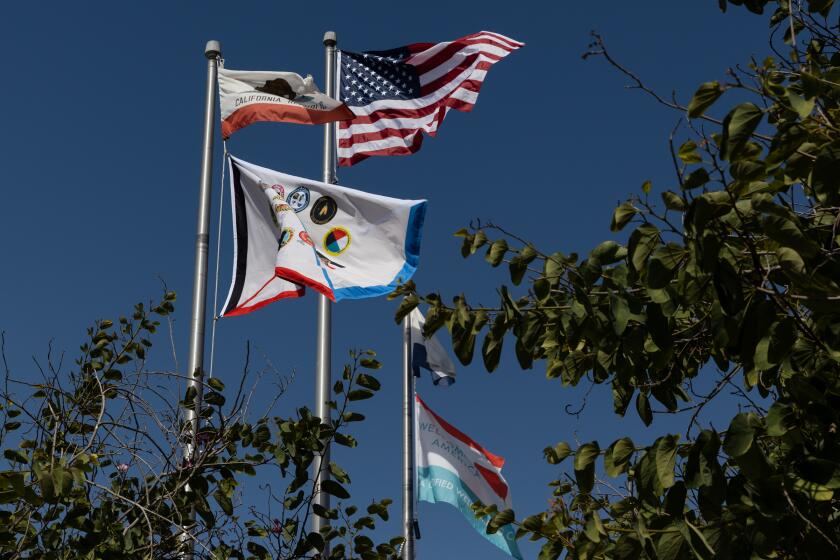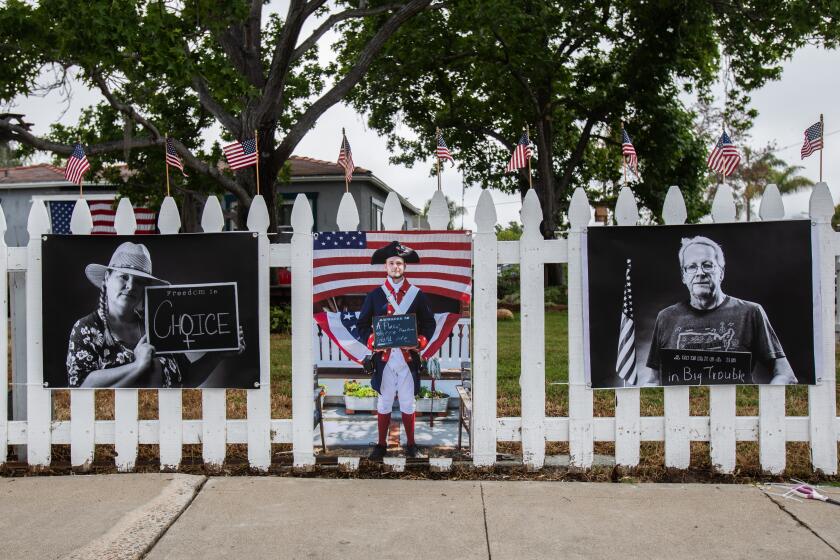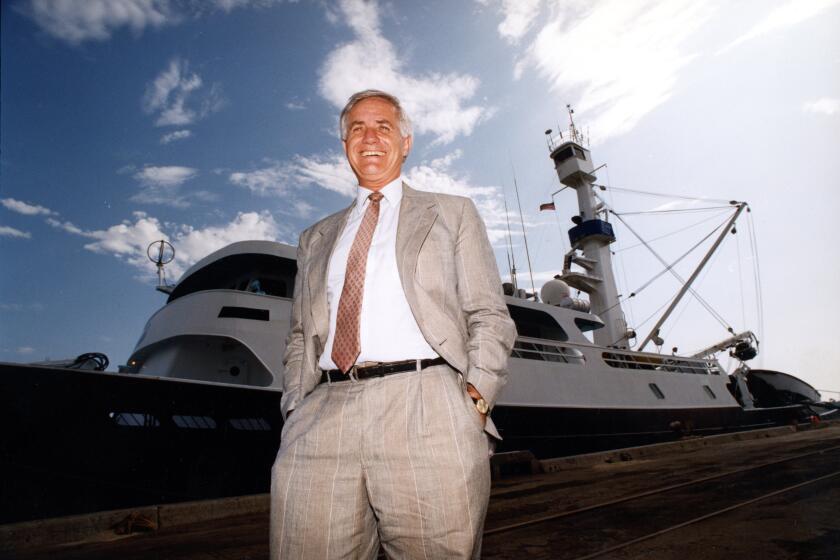Celebrating 10 years of ‘One Book’
The idea was to turn the whole city into a giant book club, thousands of people reading the same thing at the same time and then getting together to talk about it.
Launched first in Seattle in 1998, “One Book” programs spread to all 50 states, to cities large and small, including San Diego, which this year is marking the 10th anniversary of its participation.
That’s 10 years of using books to bridge community divides at a time of widening polarization in so many other aspects of public life.
Ten years of sparking conversations about current events, controversial subjects, and little-known cultures.
Ten years of bringing the authors of the books to town for events that are increasingly popular.
How popular? Last week, when the opening event of the 2016 “One Book, One San Diego” season was announced, tickets were gone within eight hours.
“From what I saw, the program engendered these wonderful discussions about a major issue in San Diego,” said Sonia Nazario, whose immigration book, “Enrique’s Journey,” was the spotlighted title in 2007, the inaugural year. “That’s what cities should be trying to do more of.”
This year’s book is “Waiting for Snow in Havana,” by Yale professor Carlos Eire. The memoir, which won a National Book Award, is about his flight from Cuba with thousands of other children in the early 1960s after the Castro regime came to power. It, too, has immigration themes, at a time when the issue is a major part of the presidential election. And it’s about family, a topic of perennial interest.
This fall, there will be dozens of discussions focused on the book at libraries and schools around San Diego County and Tijuana. Organizers are also celebrating the 10th anniversary of the local program by bringing back Nazario and the authors of earlier featured books for talks.
“Every year, the program grows in ways we don’t anticipate,” said Clare Pister, senior engagement coordinator at KPBS, the local public broadcaster, which co-founded “One Book, One San Diego” with the city library. “People come out of the woodwork to partner with us and bring us new ideas.”
Fueling a movement
Nancy Pearl was the executive director of the Seattle library’s Washington Center for the Book from 1993 to 2004. In 1998, she came up with what she called “If All Seattle Read the Same Book.” She chose Russell Banks’ novel “The Sweet Thereafter” and invited him to town for three public events.
By June 2002, there were 63 “One Book” programs in 30 states. By December 2005, it was 350 programs in all 50 states.
The success of the idea made Pearl something of a rock star in library circles; she wrote a best-selling reader-recommendation guide called “Book Lust,” followed it up with “More Book Lust,” and even had an action figure based on her likeness.
Success also came at a time of increasing concern about a drop in literary reading in the United States. According to surveys, fewer people have been reading for pleasure, even though research shows it reduces stress, increases empathy, boosts students’ test scores, and slows the onset of dementia.
In 2005, the National Endowment for the Arts started an initiative called “The Big Read” that gives about 75 communities around the country grants every year to host month-long programs tied to one book. Several local cities have participated, including Encinitas (“To Kill a Mockingbird”), Oceanside (“Their Eyes Were Watching God”) and San Diego (“Fahrenheit 451”).
All that activity helped fuel the “One Book” movement locally. Executives at the San Diego library and at KPBS independently had wanted to start a program, and in 2007 they got together and launched it with events centered on Nazario’s book, which had come out the year before.
“To have a large city like San Diego recognize the book gave me the sense that it would speak to large groups of people, and it has,” Nazario said. It’s been used in “One Book” programs in 19 other cities and been adopted as a “common read” at dozens of colleges and high schools.
“It’s probably the most-read book about immigration in the United States, and San Diego had something to do with that,” Nazario said.
The book was chosen that year because immigration was a hot topic. Adapted from Nazario’s Pulitzer Prize-winning feature stories in the Los Angeles Times, the book tells the story of a boy traveling from Honduras to California to find his mother, who had come here for work.
“We look for a great book that has a compelling story that will resonate with readers,” said Marc Chery, a library supervisor who helps run the program.
Choosing the book, he said, is the hardest part.
Literary merit
In the spring, the public is invited to nominate books online and in-person at area libraries. Some years there have been as many as 800 nominations. This year there were about 250.
A 25-person selection committee reviews the nominations with several criteria in mind. The author has to be alive and available to come to San Diego for events. The book has to have high “literary merit,” with a strong narrative and well-developed characters. It has to be available in paperback. (A Spanish-language version is preferred but not required.)
And it has to have themes that will resonate with local readers and inspire discussions.
The selection committee spends months reading and talking about the nominations, Chery said. It helps that the members — librarians, teachers, college professors, bookstore employees, community members — are avid readers and already familiar with many of the titles.
Pister said the committee comes up with a list of 10 finalists and then she begins contacting the authors to gauge their availability and what it might cost to bring them to San Diego. Then the final choice is made.
The current selection process evolved from an earlier system that had the committee select three finalists, with the public voting by computer to determine the winner. In 2012, complications with the computerized voting, including concerns that it was vulnerable to ballot-stuffing, forced the organizers to name all three finalists as winners. It was, in effect, “Three Books, One San Diego.”
This year’s choice, “Waiting for Snow in Havana,” is unusual because the book was first published in 2003, which makes it the most dated of any of the winners. But Pister said it remains relevant because of the Obama administration’s warming of relations with Cuba.
“We don’t really consider the age of the book,” she said. “The real issue is whether it is overexposed. We thought because it was a National Book Award winner that a lot of people would have read it, but very few on the committee had. It’s a book that kind of flew below the radar.”
According to a list kept by the Library of Congress, the memoir has twice before been a “One Book” selection, in the Connecticut cities of Madison and Southington.
Eire, the author, will be at the Central Library on Sept. 20 for this year’s kick-off in San Diego. It’s already sold out. The full schedule of events is available on the internet at kpbs.org/one-book.






